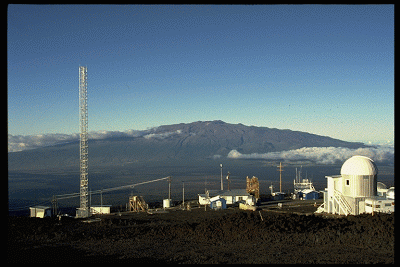
It’s often just her and maybe a groundskeeper at the site on the U.S. Marisa Gedney, the station chief in American Samoa, runs a bare bones operation. It monitors CO2 levels in the air much like the stations at Mauna Loa, the South Pole and Alaska. The American Samoa Observatory, located in the middle of the South Pacific, was built in 1974. Scientists are also taking daily air samples at stations in American Samoa, the South Pole and the northernmost point of Alaska. Mauna Loa Observatory is now part of a worldwide network run by the National Oceanic and Atmospheric Administration. “They do not depend on any models, but they help us verify climate model projections, which if anything, have underestimated the rapid pace of climate change being observed.” “These are measurements of the real atmosphere,” he said. “It’s critically important to have these accurate, long-term measurements of CO2 in order to understand how quickly fossil fuel pollution is changing our climate,” Pieter Tans, senior scientist with NOAA’s Global Monitoring Division, said in a statement this summer after the new record was set. Three of the last four years saw the highest CO2 levels in the Mauna Loa site’s 60-year history. It’s that we are affecting the equilibrium.” Aiden Colton, a NOAA technician at Mauna Loa Observatory, collects air samples and works with the equipment at the station. “We’re living in a delicate balance,” Colton says. Less than 1% of it are trace gases like carbon dioxide but those are what make life possible on this planet. The atmosphere is primarily oxygen and nitrogen. He linked the rise in CO2 levels in the Earth’s atmosphere to the increase in fossil fuel emissions worldwide. Scientist Charles Keeling started recording carbon dioxide levels from Mauna Loa Observatory in 1958. “We’re seeing increases that are a hundred times faster than anything we’ve seen looking back at ice core data,” says Colton, one of several technicians at the station. It’s more than double the levels recorded during the Industrial Revolution in the late 1700s and early 1800s and it’s well above even the highest fluctuations in CO2 from hundreds of thousands of years ago, as ice core samples have shown from under Greenland and Antarctica. That’s a steep increase from the levels Keeling was recording in the 1960s when it was about 315 parts per million. Carbon dioxide levels reached 415 parts per million, the highest point in human history. In May, a new record was set on Mauna Loa. His chart showing this upward trend became known as the Keeling Curve. Nathan Eagle/Civil Beat/2019īut Keeling’s greatest discovery was the link he found between the global increase in fossil fuel emissions and CO2 levels. Scientists at Mauna Loa Observatory, about 11,000 feet up on Hawaii’s second-highest volcano, have collected air samples since the 1950s to measure CO2 in the atmosphere. The Earth essentially takes one deep breath in and one deep breath out every year.

He detected seasonal cycles of carbon dioxide concentrations as plants grew in the summer and died in the winter. As Hawaii was about to become a state, Charles Keeling was laying the foundation of modern climate change research.

Scientists have sampled the air at Mauna Loa Observatory since 1958. And that’s exactly what Colton wants to collect. It’s also pure, situated in the center of the Pacific. He counts to 10 and then quickly caps it before exhaling. MAUNA LOA, Hawaii - Aiden Colton takes a deep breath, holds it and extends a globelike glass flask away from his body.


 0 kommentar(er)
0 kommentar(er)
